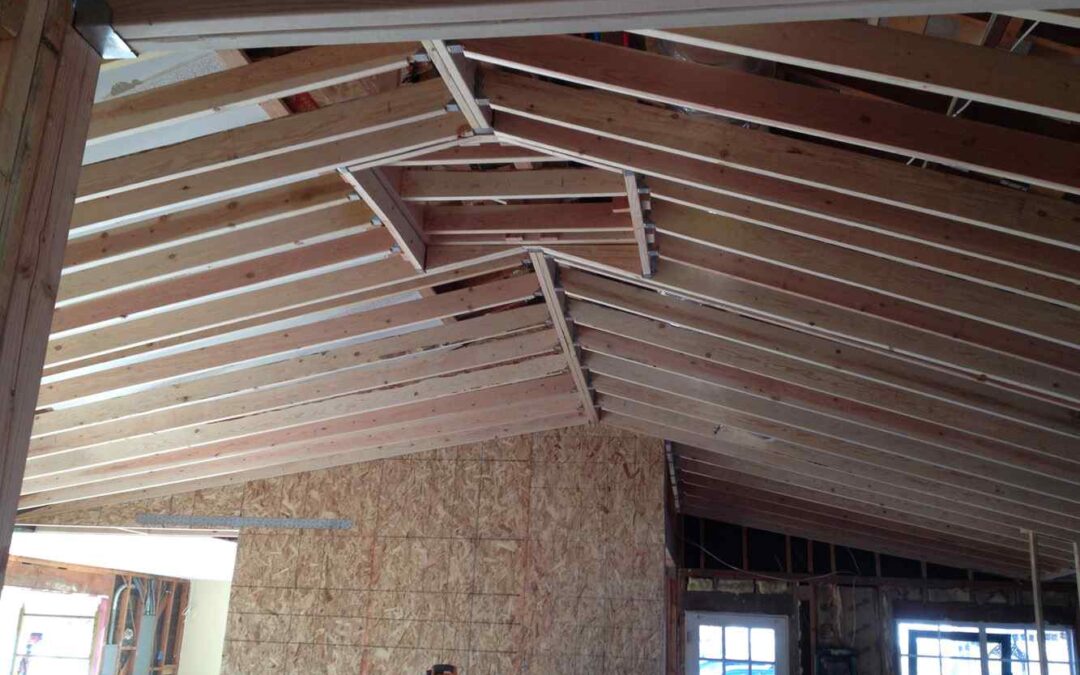Foundation
It’s all in the mix! Ordering the best concrete mix is an essential component of pouring the perfect slab. Other elements that must be factored in include the soil content, the slope on the lot, the weather on the specific day of the pour, the house to be built on the lot, and a whole lot more. Knowing how to order the correct concrete mix comes with years of experience and many pours.
Concrete Pump
A concrete pump guarantees a uniform pour, satisfactory finishing time, fewer voids, and a reliable finish due to the quickness of the application. It is policy to employ a concrete pump, or sometimes two if required, on every custom home project. It is simply absurd to risk the chance that concrete will get old waiting for the trucks ahead of it. When for a marginalized cost, a concrete pump will assure that the best results which are a stronger slab of concrete with a smoother finish.
Measurements
Have you ever seen a home under construction where the slab has been jackhammered in spots? This is caused by the lack of a tape measure or inability to read plans or even both!?! When different subcontractors work on a slab, it’s pretty common for miscommunication to occur and in the end, mistakes are made. It’s our policy to personally measure all the forms, electrical and plumbing penetrations after all the subcontractors have left and just before we schedule the concrete for the pour. It’s such a simple concept, but surprising how few builders institute and enforce this policy. The devil is always in the details which can make all the difference in the quality of your home.
Framing
Although we have used other methods such as concrete block for specific applications, we typically use conventional farming methods that follow residential building codes called “Stick-Build”. We also use solid wood for our materials we never compromise by cutting corners using finger joint studs. In addition, we inspect every piece of lumber for mold along with structural integrity before it is used in a home. We will not use molded or warped wood in our homes. To assure that every framing detail follows local and even national building codes we also contract a third party inspector to inspect our framing on each job.
Plumbing
Mold can only grow in areas where water is present and can spread quickly through a home with even a minor plumbing issue. To ensure there are no leaks in the plumbing, we put water in the pipes of our homes, with the appropriate amount of pressure, for several weeks before sheetrock. During this time, we visually inspect every joint for even the most microscopic leak. By the time sheetrock is installed, any issue will have been targeted and repaired.
HVAC
An HVAC system is a very fundamental component to ward off mold while retaining indoor air quality. A proper HVAC system will push the air through your home, replacing the moist outside air with drier air. One of the disadvantages of the new tight, energy-efficient methods that are employed in home building is a predisposition for mold to grow. At Mitchell Construction we build an energy-efficient home with go-green methods that will not have mold issues later down the road.
Electrical
The final segment that must be installed at this juncture phase of construction is electrical and wiring. Every single electrical plug, ethernet drop, and cable outlet must have the appropriate wiring before the home gets insulation and sheetrock.
Roofing
Roofing leaks can a nightmare for any general contractor or homeowner. They are often very hard to find and very expensive to fix!. Especially in or around your fireplace, these type of leaks are common. However, they are often so tiny that they go unnoticed by a home builder. That is why we water-test certain areas of the roof. However, around the fireplace we will sometimes hire a waterproofing company to do a couple of hour test just to make certain there are no leaks present, not even tiny ones.
Insulation & Sheetrock
Insulation has sure come a long way over just the past decade. With the development of new techniques, homes now can be better insulated and benefit from the longevity of products that simply stand up better to the test of time. Some products are chosen for their go-green features. Others are high caliber in performance. Depending on the insulation method chosen, there are now sheetrock products which can better sound insulate better than ever before. Once your home is insulated, sheetrock can then be applied throughout. Finally, tape and texture is applied to conceal the sheetrock joints. Different textures can be applied to achieve different looks.
Cabinets, Trim & Paint
Next, the cabinets and trim are professionally installed. The cabinets are typically built at an off site at a local cabinet shop and then brought in for installation. Then, the trim is ready to be installed right up to the cabinets. Trim includes the baseboard, door and window trim, and any other specialty trim. Finally, the paint and stain are applied throughout the home.
Countertops, Appliances, Plumbing & Electrical
At this phase, we are ready to bring out the big guns! Once we begin to see countertops, tile, appliances, plumbing fixtures, and light your home begins to take on its own unique personality and really starts to come to life.
Flooring, Hardware & Glass
Depending on whether the flooring is hardwood or tile the flooring will have a specific spot in the greater scheme of the schedule. Wood must be applied toward the very end, versus concrete floors are basically installed when the slab is poured. Hardware, such as door and cabinet hardware, is the icing on the cake, along with the glass and mirrors. Specialty glass may make it into the schedule at an earlier point, but typical glass for showers and cabinet doors typically get installed toward the end of your custom home building project.
Finishing Touches
Because a construction project by design is a dirty business which requires some rugged materials, the final clean up usually occurs over the course of the last few months. As one clean is completed, it’s as if another layer of dirt and dust are revealed for the next round of cleaning. As a result, our final clean is really a series of cleaning days over a period of months, designed to get to the home truly clean and ready for move in. In fact, there are a lot of little steps along the way that work to mitigate and help make this step happen more smoothly.





